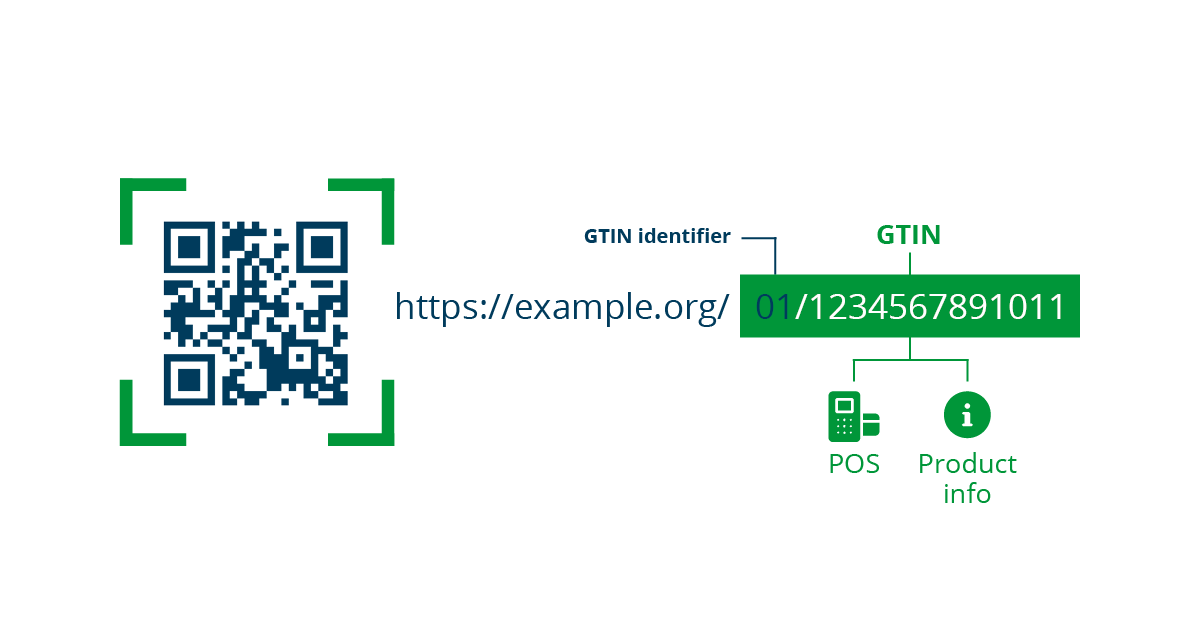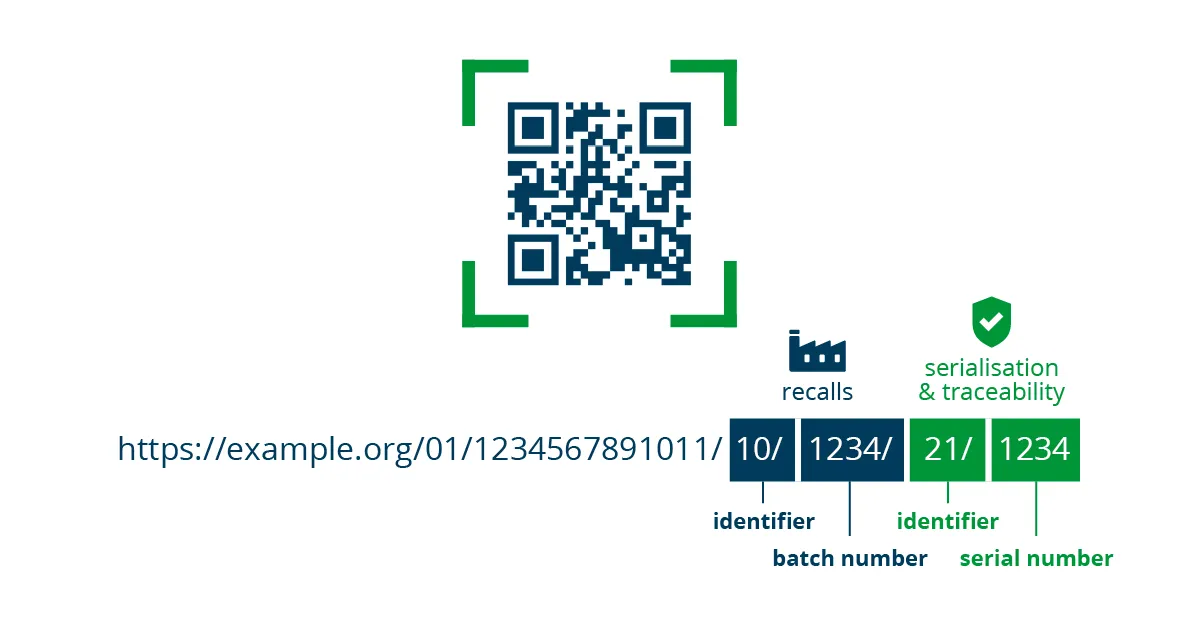On 26th June 1974, retail history was made with the scanning of the first-ever linear barcode – located on a multipack of Wrigley’s Juicy Fruit chewing gum – at a Marsh supermarket in Troy, Ohio, USA.
The linear barcode started as a method to help supermarkets facilitate price look-up at the point of sale (POS) and has now become the common standard for commerce the world over, with global specifications managed by the international standards organisation GS1.
A lot has changed since 1974, however, and while linear barcodes are still scanned more than 6 billion times every day, there has been a dramatic increase in the number of brands utilising additional barcode formats – including Data Matrix and QR codes – to fulfil wider business goals.
In this blog we chat to with Phil Archer, Director of Web Solutions at GS1, and Paul Reid, Head of Standards and Consulting at GS1 UK, about GS1 Digital Link, a new standard that aims to help brands bring their product barcodes online.
Increasing connectivity drives the need for a new type of barcode
We are living in the era of big data, with brands increasingly expected to provide product information in an easy and accessible way – be this to consumers looking to find out more about a specific product or retailers looking to optimise efficiency with access to accurate product data and supply chain information.
“As a consumer, or a retailer, the idea that you don’t know something, or can’t find something out is old fashioned,” suggests Archer. “If I'm confronted with a product and I want to find out where it came from, or what's it made of, or how it compares with something else, I expect to be able to find out.”
Many brands have responded to the demand for more data by adding secondary barcodes to their product packaging. A single pack might include a QR code for consumer-facing applications, alongside multiple other data carriers (including linear barcodes, 2D codes, or NFC and RFID tags) for use at POS, internal stock control, or supply chain operations management.
However, having multiple barcodes is not only confusing for consumers, it can also cause issues with scanning at the POS systems, and takes up valuable space on the packaging design.
With this in mind, GS1 is setting the gears in motion to help industry transition to a single, data-rich 2D code, which allows everything from warehouse machinery and POS scanners, to specialised apps and smart fridges to obtain information about a product. A single code, which could be used to improve supply chain visibility, ensure product safety, and bring a wealth of information to consumers, both at home, and in store.
“The linear barcode has survived a remarkable length of time, but now we have to do more,” says Archer. “We have to update the GS1 system to work in this new data-focused world – this is the aim of the GS1 Digital Link.”
What is the GS1 Digital Link?
“Short answer – it’s the internet,” says Archer. “All we are doing is taking a barcode and sticking it on the end of a URL – it’s that simple.”
GS1 Digital Link is a simple, standards-based structure for encoding information into 2D codes which then allows that information to become part of the web – allowing consumers, retailers, and anyone involved in the wider supply chain to access an array of instantly updatable, brand-controlled product information
With a GS1 Digital Link, identifiers are located within a barcode, such as a GTIN (Global Trade Item Number – the same number encoded in a linear barcode and used to identify a product at the checkout) and become gateways to a range of information about a product.
“This is about modernising the barcode and doing it in such a way that everyone can play, and everyone can benefit,” says Paul Reid. “We have developed the GS1 Digital Link standard, in collaboration with some of the world’s largest retailers, manufacturers, and transport and logistics firms, so that everyone can use it.”
What does a GS1 Digital Link look like?
GS1 Digital Link is a QR code embedded with a GS1 Digital Link ‘URI’ – this is essentially a website URL with a product GTIN added onto the end.

The 2D code can be scanned using an image-based scanner which will use the GS1 Digital Link URI to access information about the product. If the scanner is located at the POS, this can be done automatically using the GTIN in the same way as with a linear barcode; if the scanner is on a consumer’s smartphone this can be done by connecting the user to a brand-owned web page that provides specific brand-controlled product information.
Brands can then choose to add additional levels of granularity by including subsequent identifiers within the data string of the GS1 Digital Link URI – this could include a product’s batch and lot numbers, or, for serialised products, an individual item code or serial number.

The standard allows for real-time adjustments of product information, so that, for example, in the case of a product recall, landing pages can be appropriately updated so that anyone scanning a code is instantly notified.
The same standard also allows for the creation of rules which can be used by apps and scanners to connect to specific user experiences. In essence, this means that apps can be developed to understand the GS1 Digital Link standard and use additional data in a barcode to access specific information.
In a medical setting, for example, where a patient requires information about a medical product in a specific language, apps can be developed to read a product barcode and direct the patient to information in their preferred language.
“It’s a simple but profound change,” says Archer. “It takes us from a simple way of conveying one number to a Swiss army knife of opportunity – allowing consumers, retailers, and anyone involved in the wider supply chain to access an array of instantly updatable, brand-controlled product information.”
Transitioning commerce to a single data-rich 2D code
The GS1 Digital Link standard provides a vision for a future where the linear barcode is replaced by a single, data-rich 2D code, which can be used by everyone to access information that’s tailored to their particular needs.
At present, some barriers stand in the way of moving over to a single barcode – namely an enormous global retail infrastructure network that has been designed to work with linear barcodes.
“For a 2D code you need an image-based scanner – but many current POS systems are only equipped to manage linear barcodes,” says Reid. “This means that a GS1 Digital Link-enabled 2D code can currently do everything, except go ‘beep’ at the checkout – but we are hoping to change that.”
A report from GS1 US revealed that 82% of retailers and 92% of brand owners supported transitioning from the linear barcode to a 2D code within the next five years – that said, it’s unlikely that we will see a synchronised ‘switch’ from linear to 2D any time soon.
“We can’t say exactly when this will be,” says Reid. “For now, the GS1 Digital Link standard will provide the majority of brands with an option for one 2D code, alongside a linear barcode – which is a significant step forward.”
Are you interested in using the GS1 Digital Link standard?
When linear barcodes were first introduced in the 1970s few could have anticipated just how important they would become. We believe the same to be true of the GS1 Digital Link – in time, this will become a tool that will be adopted across all sectors, as product identification, automatic data capture, supply chain visibility, and the ability to share information become ever more important to global business operations.
However, as with any product code, a GS1 Digital Link-enabled barcode can only be effective if it is correctly printed. Having a suitable system in place to print 2D codes and check the quality and correctness of the printed code, is, therefore, crucial to ensure that brands can make the most of this standard.
If you are considering adding a GS1 Digital Link-enabled 2D code to your product packaging and need more information on how best to do this, please get in touch. As a regional member of GS1 UK, Domino is proud to offer a range of globally compliant barcoding solutions, and specialist code verification systems, to suit the requirements for all industries and packaging types.
Further information on the GS1 Digital Link standard is available from the GS1 website: https://www.gs1.org/standards/gs1-digital-link